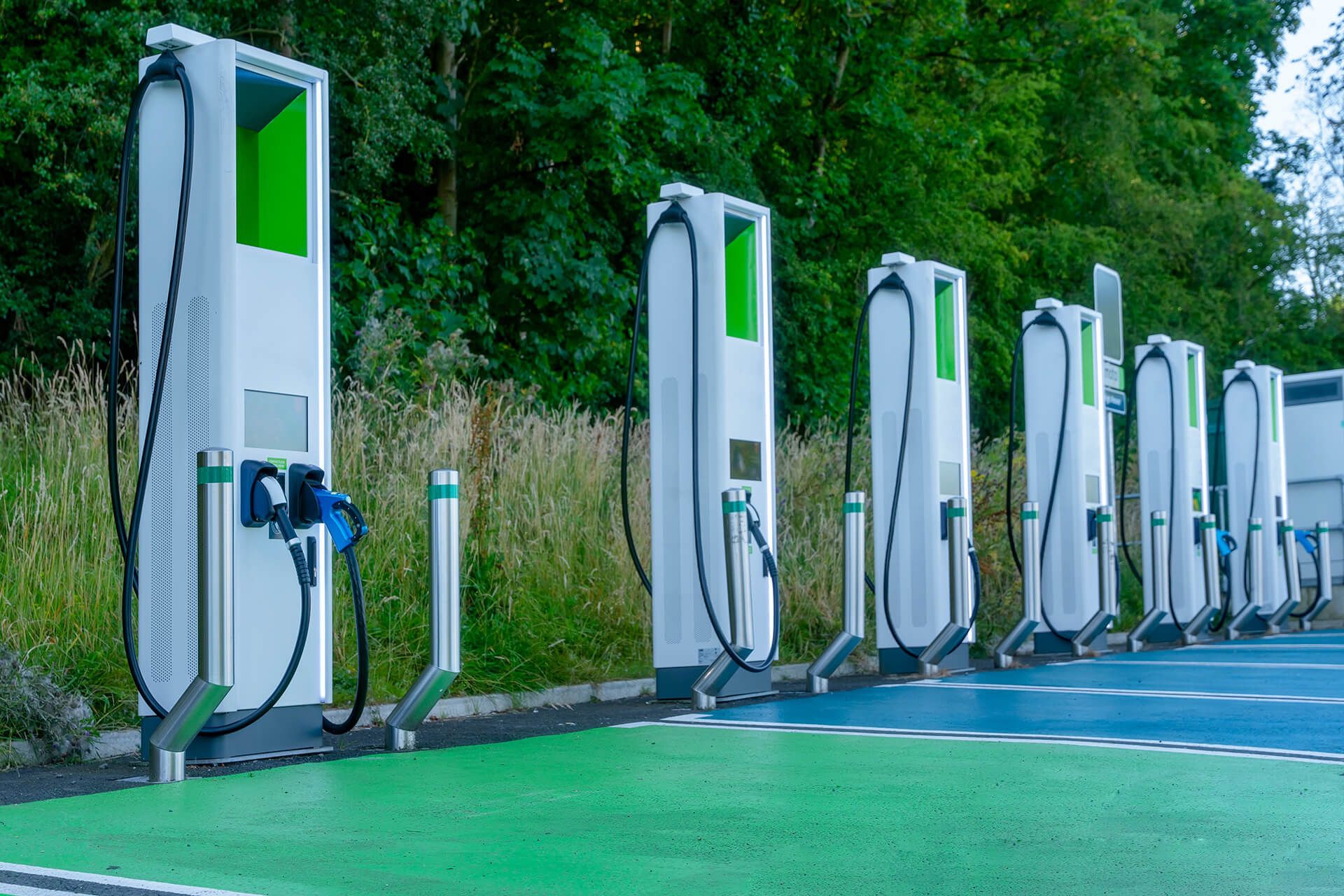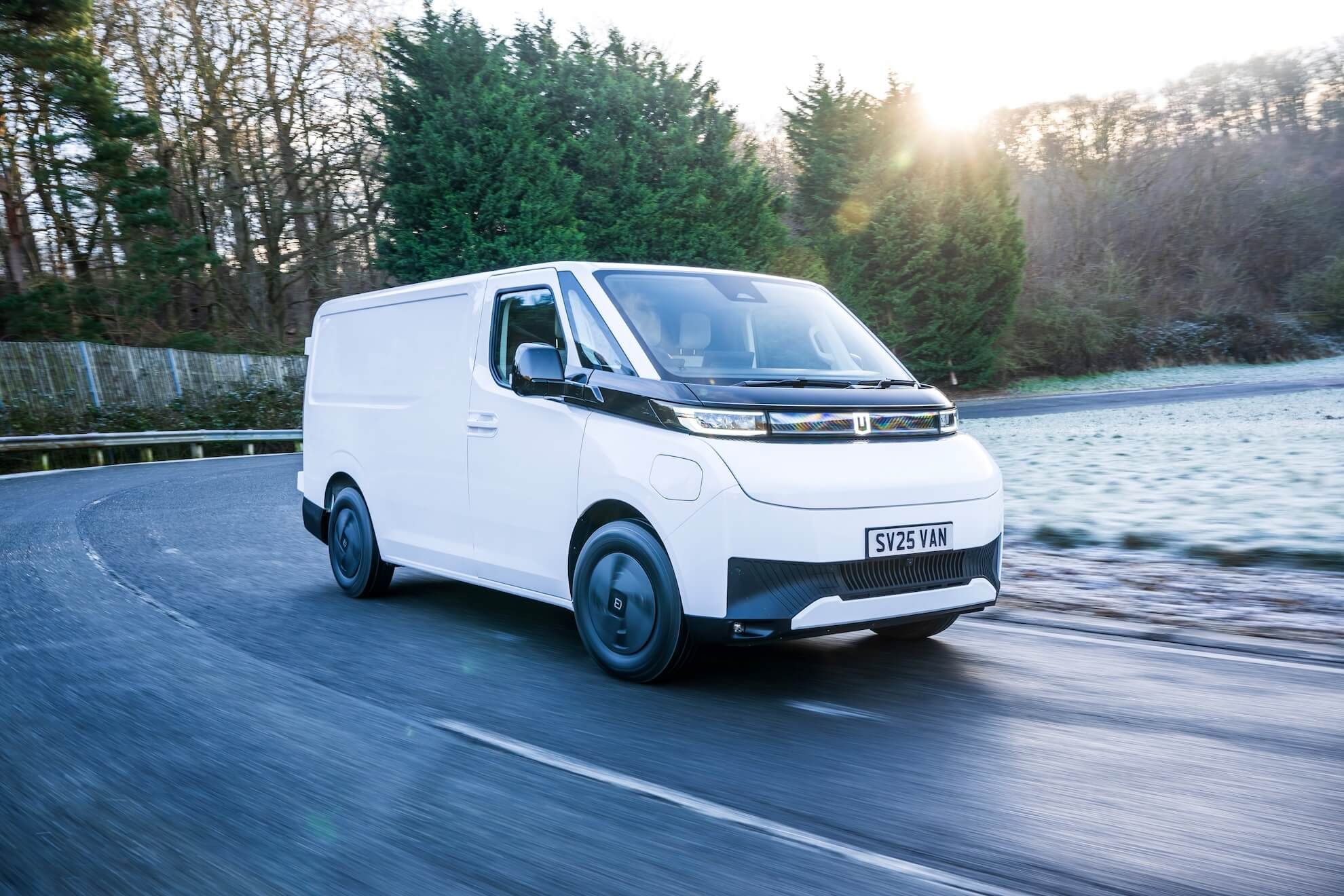
Workplace charging 101: installing EV chargers for your business
For businesses and fleets considering workplace electric vehicle chargers, there is a lot to think about. In this article, we take a deep dive into the benefits, planning, grants, installation, setup, and management of workplace charge points.
Breakdown:
Installing EV chargers for your business
Grants: Making EV charge points more accessible
Installation & compliance of workplace EV chargers
Access control: keeping chargers available and secure
Are you ready for workplace charging?
Installing EV chargers for your business
There are more than 1.5 million electric vehicles (EVs) on UK roads today.1 This number is only set to grow as the UK approaches the 2035 ban on the sale of new petrol and diesel vehicles.2 With more motorists making the switch and the electric transition ready to accelerate, workplaces must be ready to provide adequate charging infrastructure for their fleets, employees, and visitors. Around 80 per cent of employees expect to be able to charge their cars at work.3
Planning for on-site charging
First and foremost, it is important to assess both current and future charging demand. Consider the full breadth of users – fleet vehicles, employee private vehicles, and visitor vehicles – and how that will evolve with time. Also consider the usage pattern, will it be employees charging during the day? Or a van fleet recharging overnight? If many chargers are needed, then providing adequate infrastructure will require substantial investment.
When determining the budget for new EV charging infrastructure, it is essential to include all the costs associated with hardware, installation, commissioning, and ongoing operation. In some cases, it may be necessary to increase the electricity supply to the site, especially if high-power DC ‘fast chargers’ are needed. The budget should also consider grants and the implementation of access control (more on these below).
Hardware selection should be determined by charging requirements. Simply catering for the occasional visitor with an EV means a typical domestic 7.4 kW charge point may be enough. If you are recharging a fleet of vehicles or preparing for employees switching to electric vehicles en masse, the options are more complex. For example, a small business may want five 22 kW three-phase chargers, while a fleet operator may require DC fast charging stations, with 150 kW or more. For fleet operators, future proofing charging infrastructure with higher output than currently required will ensure long-term capability as electric vehicle technology evolves.
So, to summarise, we have 5 key considerations:
- Current and projected demand from all users.
- Usage patterns and timing.
- Budget for hardware, installation, and operation.
- Site assessment and electrical capacity.
- Hardware selection, installation, and implementation.
Grants: Making EV charge points more accessible
Here in the UK, workplaces have access to two different specialised grants to assist with charging infrastructure. The first is the Workplace Charging Scheme (WCS), and the second is the EV Infrastructure Grant. It is important to note that the closing date for both schemes is currently 31 March 2026.
Workplace Charging Scheme (WCS): This grant provides up to 75 per cent of the purchase and installation costs. This is capped at £350 per EV charge point and to a maximum of 40 units. It is available to businesses, charities, and public sector organisations. To receive the grant, you must apply for a voucher, which can be given to an OZEV (Office for Zero Emission Vehicles )-approved installer. The voucher is valid for 180 days.4 Find out more.
EV Infrastructure Grant: This grant is intended for small- and medium-sized businesses that require a more substantial solution. It provides businesses with 75 per cent of the cost of building and installation work to a maximum of £15,000. It offers up to £350 per EV charge point and up to £500 per parking space enabled with supporting infrastructure. Businesses can receive up to five grants across five different sites.
Installation & compliance of workplace EV chargers
To be eligible for grants and ensure that your installation is compliant with all applicable legislation, you must use an installer approved by OZEV. The installer will conduct pre-installation checks, verify your site’s suitability and ensure there is sufficient electrical capacity.
The physical installation will include all necessary electrical control, safety devices, metering, cabling, conduits, and groundwork. This will conclude with commissioning and testing to ensure that all chargers are operating correctly and safely. It is important to know that for OZEV grants, all chargers must be new, include a three-year warranty, conform to cybersecurity regulations, be completed with a BS7671 Electrical Installation Certificate, and be carried out by an OZEV-approved installer.5 You can learn more about the details here.
Access control: keeping chargers available and secure
Managing access is an important consideration for workplaces investing in new EV charger installations. Who do you want to use the chargers? Employees and visitors? What about after-hours public access? Establishing clear policies on charging, including fair usage and time limits, will ensure access remains equitable, particularly if there are fewer chargers than electric cars. For fleets, access and control are more straightforward and based on operational requirements.
Access is usually managed through RFID cards and smartphone applications. This provides the manager with precise control over who can access the charge points and when. If businesses are looking to use the charge points as an additional revenue stream, various management platforms can be implemented to reduce the administrative burden. Always consult with your charge point provider to discuss access control options and how they can align with your objectives.
Are you ready for workplace charging?
Investing in charging infrastructure is a simple way to futureproof a workplace and prepare for the rapidly rising popularity of EVs. For forward-thinking businesses, EV charging can be a fantastic employee perk that simultaneously enhances business sustainability. For fleets, designing a system with the capacity and speed to ensure uptime is paramount. With UK Government grants available until March 2026, now is the perfect time to make a strategic investment in your business's electric future.
1 https://www.zap-map.com/ev-stats/ev-market
2 https://www.rac.co.uk/drive/news/electric-vehicles-news/hybrid-vehicles-evade-reinstated-2030-ban-on-sale-of-new-diesel-and-petrol/
3 https://www.virta.global/ev-fleet-management
4 https://www.gov.uk/guidance/workplace-charging-scheme-guidance-for-applicants
5 https://www.gov.uk/guidance/commercial-chargepoints-minimum-technical-specification



